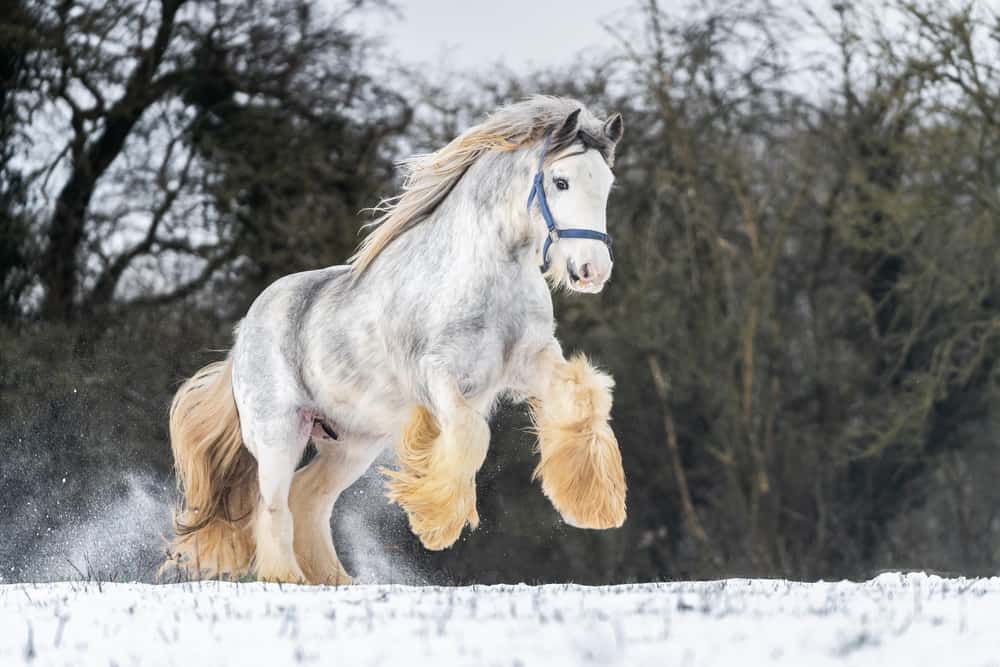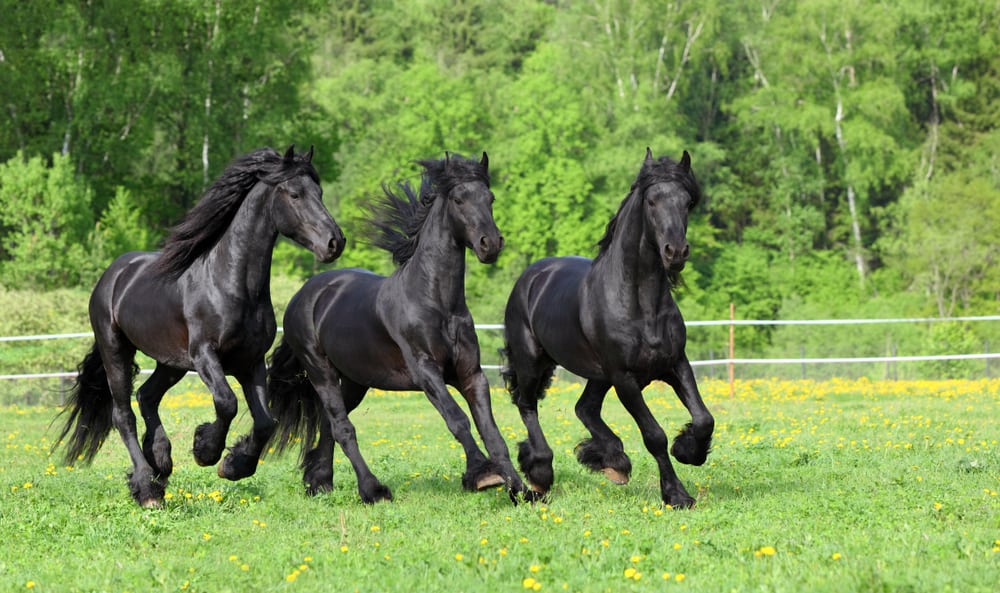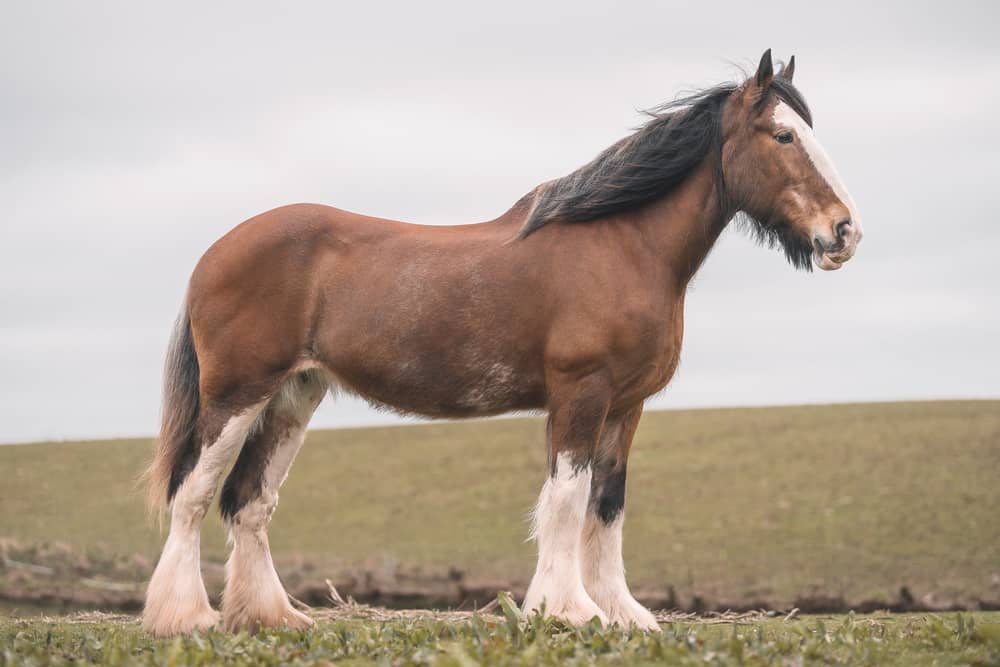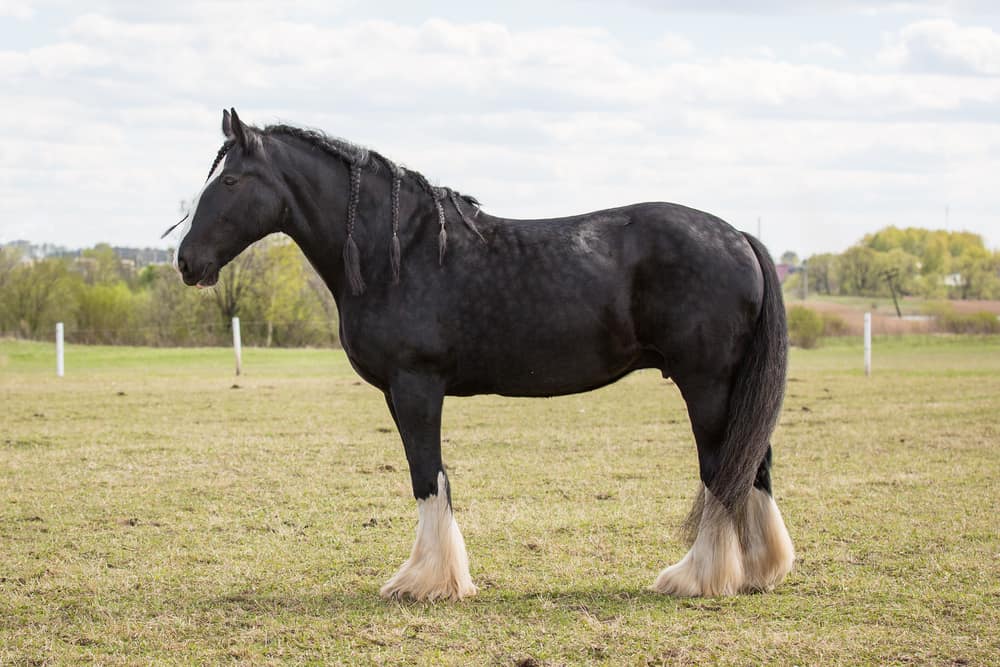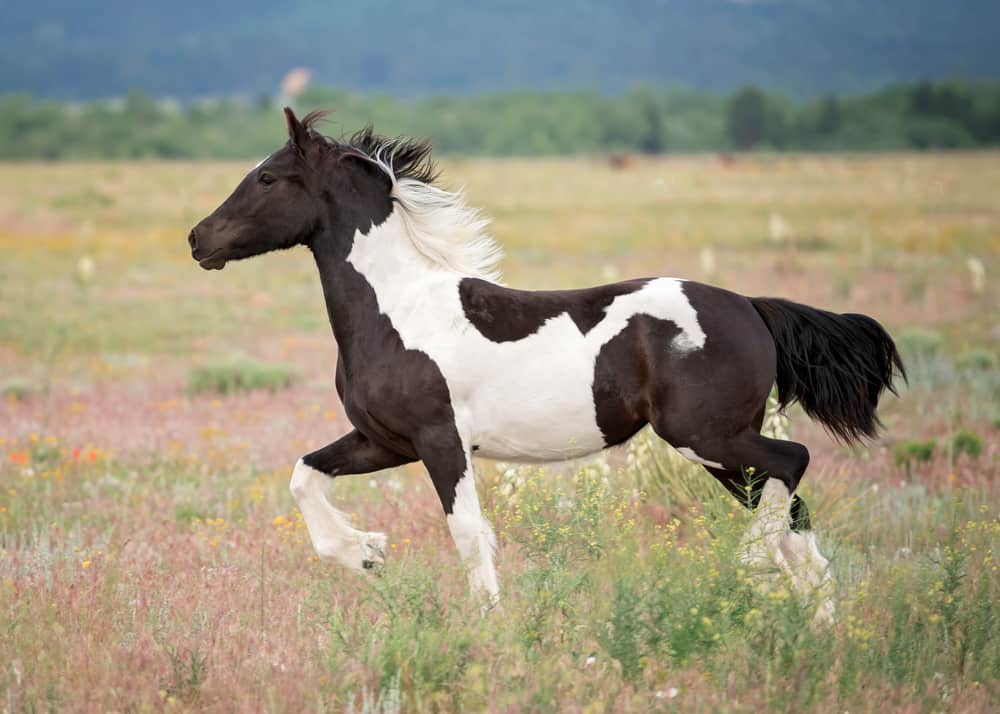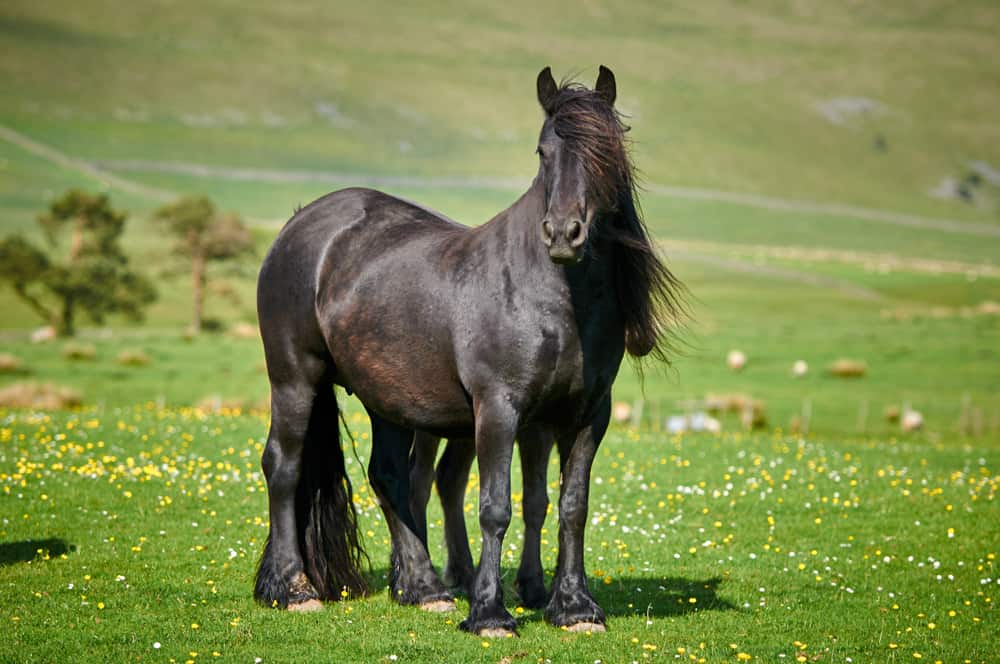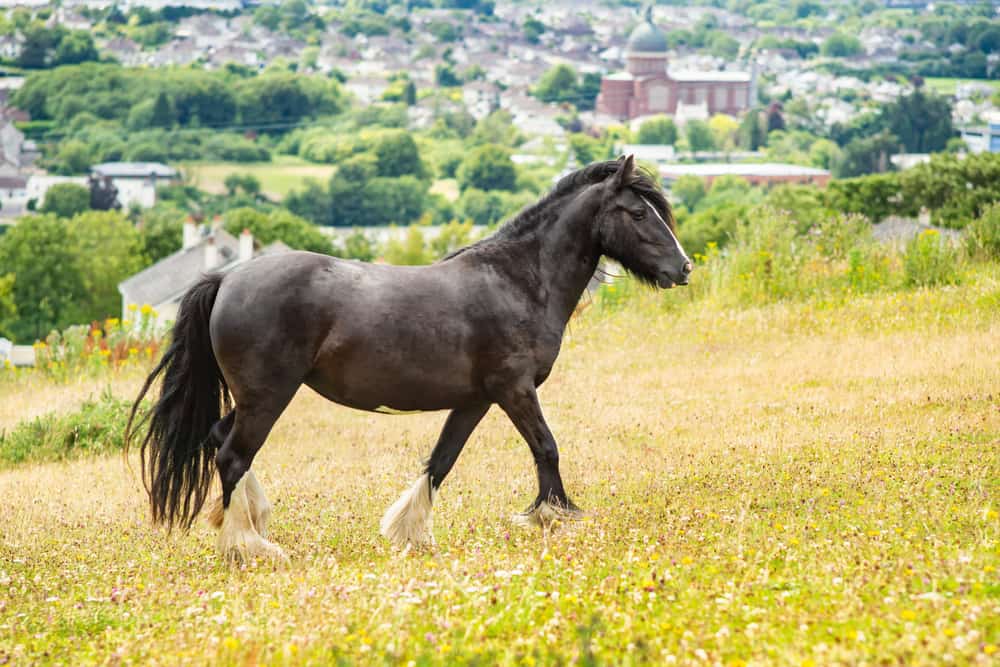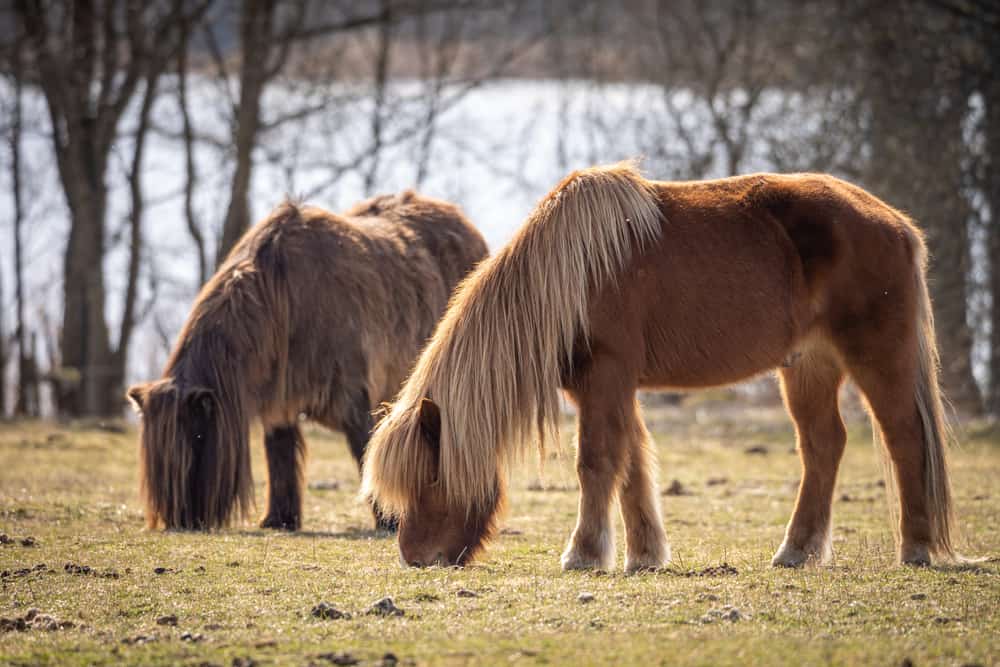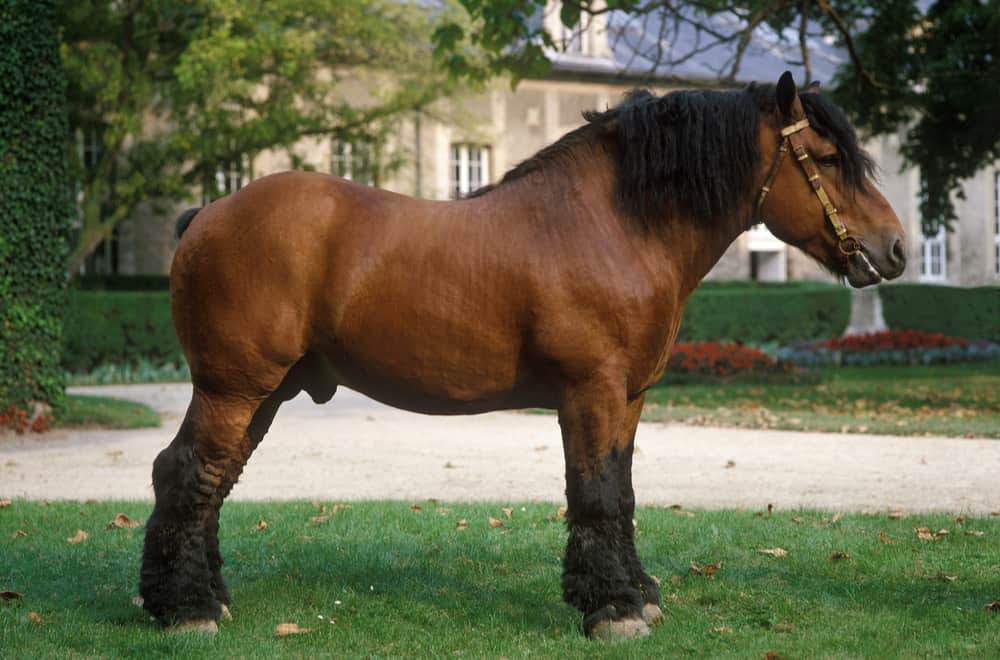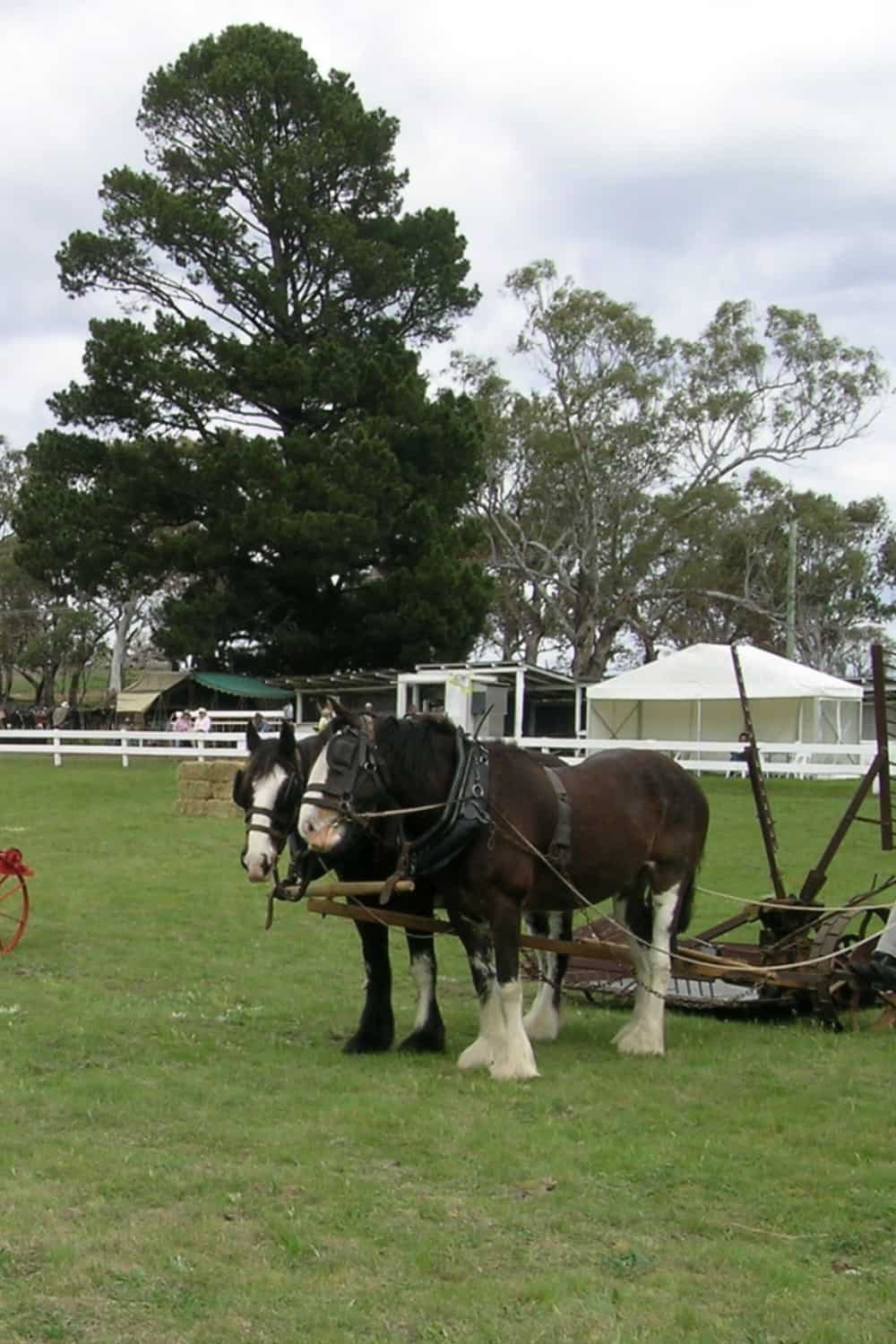The number of equine breeds with long hair below the knees is not abundant. However, these animals exist, and the feathers around their hooves give the horse an extra layer of warmth. Besides, hairy breeds also have long flowing manes and thick coats.
Most feathered horses and ponies are draft animals. Some of the most popular breeds include Friesians, Clydesdales, Gypsy Vanners, and Dales Ponies. All these equines are quite attractive when they prance and if well-groomed.
This article lists the most common feathered horses and their features, along with tips on how to take care of them.
Why Do Horses Have Feathered Feet?
A few horse breeds evolved to grow feathers around their hooves. However, the hair layer isn’t for decorative purposes but has a double role. First, it keeps equine legs warm during harsh weather, and second, it drives water further from the heels.
These features were essential for horses living in humid and cold climates. Hair also protected their lower legs from sharp edges and brambles when roaming rocky terrains or thick bushes. Besides physical injuries, dense coats regulate the body temperature and reflect harmful UV light.
More so, all feathered breeds have the gene that gives them feathers. The reason why some have light feathering is a result of lower bone density. Conversely, Clydesdales or Shires have plenty of hair due to denser bones. Thanks to the cold-bloodedness, such horses are calmer and less erratic.
Breeds Of Horses With Feathers
Knowing the origin and characteristics of various horses can help you decide what’s best for your stables. Below is an overview of the most renowned equine breeds with furry feet.
1. Friesian
Solid black Friesians originate in the Netherlands and are the most prominent representative of feathered breeds. This equine has a noble head adorned with small ears slightly turned inwards. Friesians also have luxuriously flowing tails and mane and lush feathers.
The Friesian horse is strong and boasts high stepping levels with a proud bearing and medium height. Thanks to its incredible maneuverability, the breed was one of the most commonly used in wars. They are also calm and can get easily trained. In the present, Friesians are typically a ‘show’ type.
2. Clydesdale
Clydesdales originated from the River Clyde area in Scotland at the beginning of the 19 century. This draft breed got entrusted with the duty of carts and wagons pulling on cobblestone roads in the winter. Hence, the primary role of heavily-haired legs was to protect them from the ice and snow.
Clydesdale horses stand 18 hands tall and have a long mane. Thanks to its grandeur and robust posture, this breed is very efficient in plowing agricultural land. As a result, most people considered them the ideal workhorses and soon faced extinction.
As cold-blooded species, Clydesdale horses are gentle, docile, and well-mannered. So, most people enjoy riding them for therapeutic or trail purposes. Also, the breed often undergoes crossing with Thoroughbred horses to give rise to athletic warmbloods.
Most Clydesdale horses are a solid black or bay color. Owners can often spot white markings on their hocks and knees. Equine enthusiasts who seek a fancy appearance go for chestnuts with white feet and a white stripe on the forehead.
3. Shire
Shires also come from Britain and are showy horses with distinctive looks. The tallest horse of all times as recoded by Guinness was indeed a Shire gelding Sampson. Later renamed Mammoth, he was 7 feet and 2.5 inches high.
Shires are muscular, and hence, could pull carts and drays full of beer to taverns. These equines also did multiple other tasks, including plodding canals, clearing farmlands, and towing boats. The most common coat colors include black, brown, grey, and bay, with white marks.
4. Gypsy Vanner
As the name implies, Gypsy Vanners used to be loyal companions of Romani travelers on the British Isles. Thanks to their sturdy build and steady temper, the Romani chose Gypsy horses to pull their living quarters over great distances. Besides working diligently, the cobs endured getting tied for long periods.
More so, Roma people adored this breed for its beautiful feathering and eye-catching coat. The most prominent examples of the Gypsy Vanner are piebald and skewbald. Typical representatives have colored or monochrome bodies, but horses in multiple colors were unpopular in the past.
Today, Gypsy Vanners are excellent show stoppers embellished with flashy long feathers. Gypsy cobs are of medium height and hence, an ideal breed for inexperienced riders. Moreover, they are friendly animals and quite patient with children.
5. Fell Ponies
As a furry breed native to the northern parts of England, Fell Ponies share genes with the extinct Galloway relative. This country horse served versatile purposes like riding, towing, and agricultural work. Some evidence shows that Fell Ponies date back from Roman times.
Regardless of the weather conditions, Fells have the stamina, intelligence, and willingness for hard work. Growing in packs, these sturdy ponies used to carry heavy coal, iron, and lead carts over long distances (242 miles per week). The most common Fell Pony coat colors are black, bay, brown, and grey.
6. Dales Pony
Modern Dale Ponies trace their origin to 17th century northern England. Thanks to their significant build, this breed used to carry lead, iron, and other ores. Dale Ponies were also part of the British Army during both world wars.
Today, this breed participates in show events, such as dressage, jumping, cross-country, and trail. Known for their tranquilness and kindness, these horses are excellent rides for kids and adults. Besides, they are diligent workers and eager to compete.
As for coat color, most Dales Ponies come in black, but also in brown, grey, bay, and roan shades. A star or a snip is the only white marking this breed can have on the head. White muzzles, stripes, and blazes are off-limits.
7. Swedish Northern Horse
As the name suggests, this breed has roots in Sweden and is popular in other Scandinavian countries. The Swedish Northern Horse is a smaller-size draft horse, 15 hands high and accustomed to cold and mountainous areas. It is also easily maneuverable in dense forests.
The breed can survive with less food even when hard work is ahead. Moreover, the thick coats, tails, and manes protect them from freezing winters. Their docile temper accepts training, and hence, Swedish Northern Horses join many global equestrian events.
8. Ardennes
The Ardennes region is the home of a horse species that seems to be the oldest known to Europe. Some chronicles witness that Ardennes were present in Ancient Rome and that Caesar and Napoleon went into battles with them. Besides war, these heavy-boned equines did vital agricultural work.
Ardennes horses are about 16 hands tall, and the most prevalent colors are bay and roan. Since they originated in harsh climates, Ardennes boast thick feathering around the feet. The breed is human-oriented and excellent for beginners and relaxing trails.
9. Australian Draft
The Australian Draft appeared thanks to the crossing of four draft breeds found in Europe. The animal has exceptional strength and calm temper, and thus, is perfect for hard work and equestrian sports.
Due to extensive crossbreeding, this animal comes in various body types and colors, including black, brown, grey, white, and roan. The average height of Austrian Draft horses is about 17 hands. Owners find them most suitable for pulling and riding purposes.
How To Take Care For Your Horse’s Feathers?
Though magnificent, keeping feathers in top condition is a challenging feat. Some breeds may even develop skin diseases. The advice below will help you take proper care of the feathered legs and feet of your beloved equine friends:
- Check the horse’s feathers, hooves, heel bulbs, and feet every day. These places can be breeding grounds for many skin conditions.
- Inspect the legs for any unusual bumps, swellings, or lumps that might indicate a health issue.
- Horses living in damp climates are particularly prone to skin problems. Hence, allow enough time for their hair to dry out in the fields or stables.
- Long feathers require the same maintenance as manes and tails. Consider shampooing and conditioning them.
- Although it grows very slowly, trim the hair regularly to keep it neat. Use a comb and clippers or scissors.
- Use a detangling spray to make feathers look shiny and sleek.
Final Thoughts
Above, we compiled a lengthy list of the most widespread horse breeds with feathered feet. Besides many things in common, like cold-bloodedness, long hairs, and docile temper, these breeds also have distinguishing features. Depending on your preferences, horses with feathers can make a perfect match.
Hopefully, our overview will help you choose your next horse. Or perhaps, you already own one and would like to share a few quick facts with us. Please, give your opinion on feathered breeds in the comment box below and keep checking our website for horse-related content.
